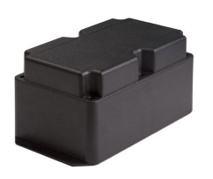April 27, 2018
- Url

 Aluminum enclosures are extremely durable. Our diecast aluminum enclosures use high quality #ADC-12 aluminum alloy casting metal, which holds its shape and stays rigid under considerable force. Aluminum is a highly conductive metal, making it a great conductor of electricity as well. In most conditions, aluminum isn’t reactive to magnetic force, either. These qualities mean it makes an excellent shield against electromagnetic frequency (EMF) and radio frequency interference (RFI). Enclosures made of aluminum can be an effective part of a project that requires independent circuitry and minimal interference.Because aluminum alloys are naturally resistant to corrosion, these enclosures can be a good choice in applications that are affected by moisture. We offer a number of finishes, including natural aluminum, powder coating or a black anodized finish. With diecasting, there are no seams or folds, other than where the body of the enclosure and the cover meet. Aluminum also offers a measure of protection against open-flame high heat. However, aluminum is thermally conductive, so it may not be the right fit for projects with temperature sensitive electronics.
Aluminum enclosures are extremely durable. Our diecast aluminum enclosures use high quality #ADC-12 aluminum alloy casting metal, which holds its shape and stays rigid under considerable force. Aluminum is a highly conductive metal, making it a great conductor of electricity as well. In most conditions, aluminum isn’t reactive to magnetic force, either. These qualities mean it makes an excellent shield against electromagnetic frequency (EMF) and radio frequency interference (RFI). Enclosures made of aluminum can be an effective part of a project that requires independent circuitry and minimal interference.Because aluminum alloys are naturally resistant to corrosion, these enclosures can be a good choice in applications that are affected by moisture. We offer a number of finishes, including natural aluminum, powder coating or a black anodized finish. With diecasting, there are no seams or folds, other than where the body of the enclosure and the cover meet. Aluminum also offers a measure of protection against open-flame high heat. However, aluminum is thermally conductive, so it may not be the right fit for projects with temperature sensitive electronics. Plastic is a popular engineering material that offers numerous benefits. One major benefit is that plastic does not conduct electricity. This is important when electrical shortages are a concern, providing a level of protection to the user as well.If cost is a factor, plastic is typically less expensive than metal. Plastic also weighs less than metal, which saves on transportation costs. Plastic is corrosion resistant and doesn’t need additional coating like steel or other types of metal.Plastic allows RFI and EMF waves to pass through, so it makes the perfect option for electronics that need to send and receive electric signals. ABS enclosures are a great choice for indoor projects. Available in a multitude of sizes, ABS enclosures provide sturdy and protective housings for all kinds of electronics. Alternatively, polycarbonate enclosures are the perfect solution for boxes that are used outdoors and need to withstand severe weather conditions.
Plastic is a popular engineering material that offers numerous benefits. One major benefit is that plastic does not conduct electricity. This is important when electrical shortages are a concern, providing a level of protection to the user as well.If cost is a factor, plastic is typically less expensive than metal. Plastic also weighs less than metal, which saves on transportation costs. Plastic is corrosion resistant and doesn’t need additional coating like steel or other types of metal.Plastic allows RFI and EMF waves to pass through, so it makes the perfect option for electronics that need to send and receive electric signals. ABS enclosures are a great choice for indoor projects. Available in a multitude of sizes, ABS enclosures provide sturdy and protective housings for all kinds of electronics. Alternatively, polycarbonate enclosures are the perfect solution for boxes that are used outdoors and need to withstand severe weather conditions.